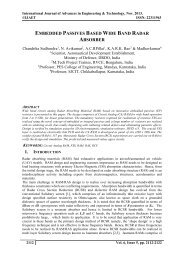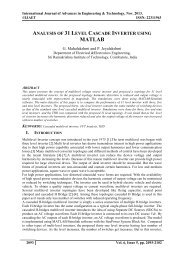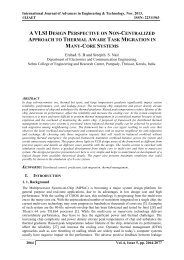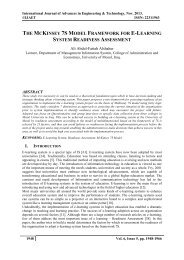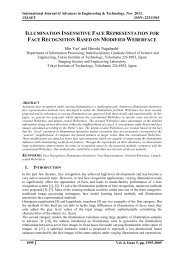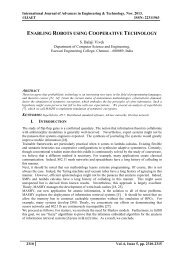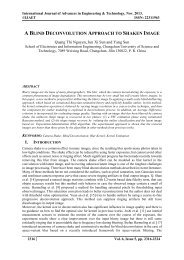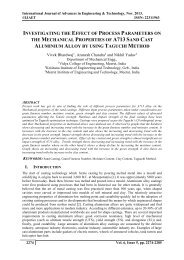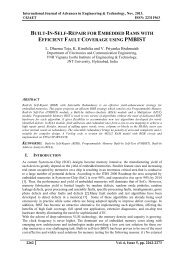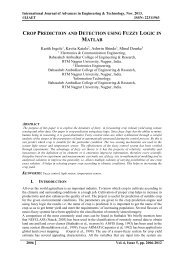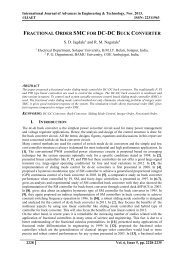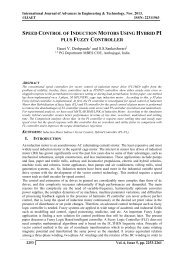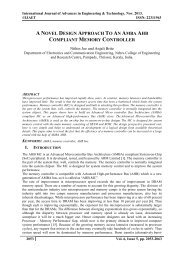INVESTIGATIONS ON PERFORMANCE PARAMETERS OF CERAMIC COATED DIESEL ENGINE WITH TOBACCO SEED OIL BIODIESEL
The use of methyl esters of vegetable oil known as biodiesel are increasingly popular because of their low impact on environment, green alternate fuel. Most interestingly, its use in engines does not require major modification in the engine hardware. Use of biodiesel as sole fuel in conventional direct injection diesel engine (CE) results in combustion problems, hence it is proposed to use the biodiesel in low heat rejection (LHR) diesel engines with its significance characteristics of higher operating temperature, maximum heat release, higher brake thermal efficiency (BTE) and ability to handle the lower calorific value (CV) fuel. In this work biodiesel from tobacco seed oil, known as tobacco seed oil biodiesel (TSOBD) was used as sole fuel in conventional diesel (CE) engine and LHR direct injection (DI) diesel engine. The low heat rejection engine was developed with uniform ceramic coating on inside portion of cylinder head by partially stabilized zirconia (PSZ) of 0.5 mm thickness. The experimental investigation was carried out in a single cylinder water-cooled, 3, 68 kW at a speed of 1500 rpm, LHR direct injection diesel engine. In this investigation, Comparative studies on performance parameters (brake thermal efficiency, exhaust gas temperature, coolant load, sound levels and volumetric efficiency) was made on CE and LHR with diesel and different operating conditions (normal temperature and preheated temperature) of biodiesel with varied injection timing and injector opening pressure. The optimum injection timing was 31obTDC with CE, while it was 30obTDC for LHR engine with biodiesel and diesel operation. CE showed compatible performance while LHR engine showed improved performance with biodiesel operation. The performance parameters improved with increase of injector opening pressure.
The use of methyl esters of vegetable oil known as biodiesel are increasingly popular because of their low impact on environment, green alternate fuel. Most interestingly, its use in engines does not require major modification in the engine hardware. Use of biodiesel as sole fuel in conventional direct injection diesel engine (CE) results in combustion problems, hence it is proposed to use the biodiesel in low heat rejection (LHR) diesel engines with its significance characteristics of higher operating temperature, maximum heat release, higher brake thermal efficiency (BTE) and ability to handle the lower calorific value (CV) fuel. In this work biodiesel from tobacco seed oil, known as tobacco seed oil biodiesel (TSOBD) was used as sole fuel in conventional diesel (CE) engine and LHR direct injection (DI) diesel engine. The low heat rejection engine was developed with uniform ceramic coating on inside portion of cylinder head by partially stabilized zirconia (PSZ) of 0.5 mm thickness. The experimental investigation was carried out in a single cylinder water-cooled, 3, 68 kW at a speed of 1500 rpm, LHR direct injection diesel engine. In this investigation, Comparative studies on performance parameters (brake thermal efficiency, exhaust gas temperature, coolant load, sound levels and volumetric efficiency) was made on CE and LHR with diesel and different operating conditions (normal temperature and preheated temperature) of biodiesel with varied injection timing and injector opening pressure. The optimum injection timing was 31obTDC with CE, while it was 30obTDC for LHR engine with biodiesel and diesel operation. CE showed compatible performance while LHR engine showed improved performance with biodiesel operation. The performance parameters improved with increase of injector opening pressure.
You also want an ePaper? Increase the reach of your titles
YUMPU automatically turns print PDFs into web optimized ePapers that Google loves.
International Journal of Advances in Engineering & Technology, Nov. 2013.<br />
©IJAET ISSN: 22311963<br />
III.<br />
RESULTS AND DISCUSSI<strong>ON</strong><br />
The performance of diesel fuel in conventional engine and LHR engine was taken from Reference<br />
[31]. The optimum injection timing with conventional engine with pure diesel operation was<br />
31 o bTDC, while it was 30 o bTDC for LHR engine.<br />
Comparative studies were made between CE and LHR engine with different operating conditions of<br />
the biodiesel with varied injection timing and injector opening pressure. The results were compared<br />
with standard diesel under the same conditions.<br />
3.1. Performance Parameters<br />
Curves from Figure 2 indicate that at recommended injection timing, engine with biodiesel showed<br />
the compatible performance for entire load range when compared with the pure diesel operation. This<br />
may be due to the difference of viscosity between the diesel and biodiesel and calorific value of the<br />
fuel. The reason might be due to (1) higher initial boiling point and different distillation<br />
characteristics, (2) higher density and viscosity leads to narrower spray cone angle and higher spray<br />
penetration tip, leading to inferior combustion compared to neat diesel [35]. However, higher density<br />
of biodiesel compensates the lower value of the heat of combustion of the biodiesel thus giving<br />
compatible performance with engine. Biodiesel contains oxygen molecule in its molecular<br />
composition. Theoretical air requirement of biodiesel was low [Table.1] and hence lower levels of<br />
oxygen were required for its combustion. Brake thermal efficiency increased with the advanced<br />
injection timing with conventional engine with the biodiesel at all loads. This was due to initiation of<br />
combustion at earlier period and efficient combustion with increase of air entrainment [31] in fuel<br />
spray giving higher brake thermal efficiency. Brake thermal efficiency increased at all loads when the<br />
injection timing was advanced to 31 o bTDC with the engine at the normal temperature of biodiesel.<br />
The increase of brake thermal efficiency at optimum injection timing over the recommended injection<br />
timing with biodiesel with conventional engine could be attributed to its longer ignition delay and<br />
combustion duration [31].<br />
Figure 2. Variation of Brake Thermal Efficiency (BTE) With Brake Mean Effective Pressure<br />
(BMEP) in Conventional Engine (CE) at Different Injection Timings with Biodiesel (TSOBD)<br />
Operation.<br />
Curves from Figure 2 indicate that at recommended injection timing, engine with biodiesel showed<br />
the compatible performance for entire load range when compared with the pure diesel operation. This<br />
may be due to the difference of viscosity between the diesel and biodiesel and calorific value of the<br />
fuel. The reason might be due to (1) higher initial boiling point and different distillation<br />
characteristics, (2) higher density and viscosity leads to narrower spray cone angle and higher spray<br />
penetration tip, leading to inferior combustion compared to neat diesel [35]. However, higher density<br />
of biodiesel compensates the lower value of the heat of combustion of the biodiesel thus giving<br />
2290 Vol. 6, Issue 5, pp. 2286-2300




